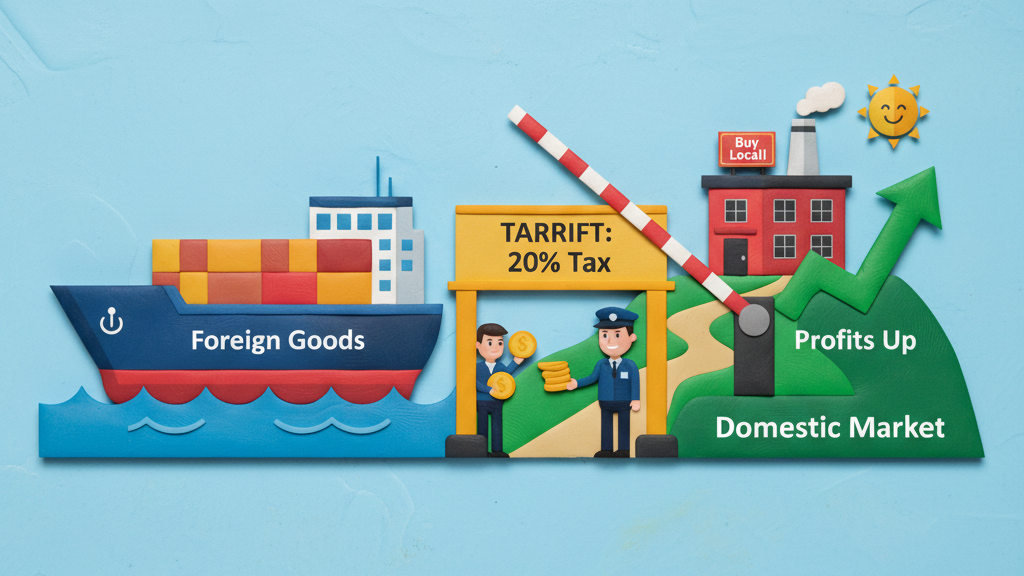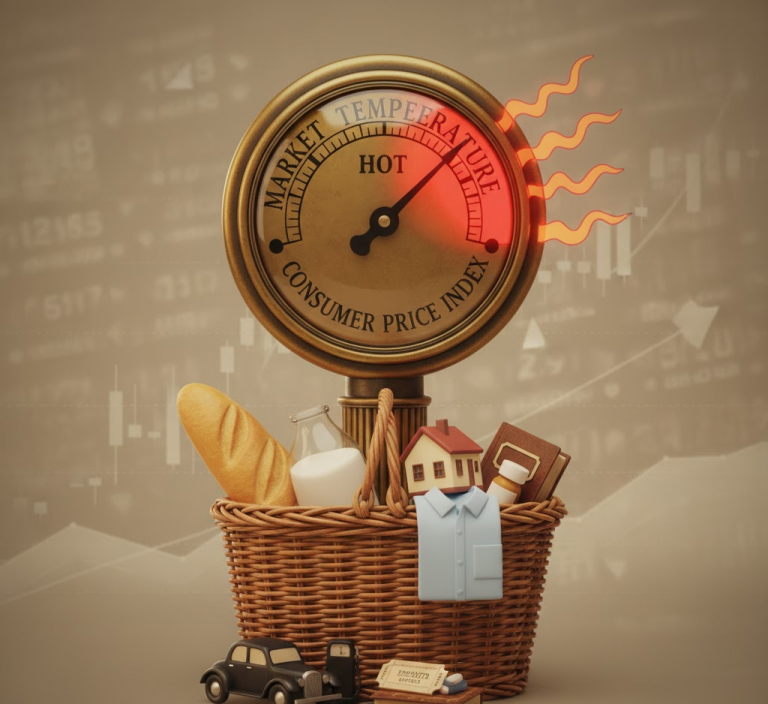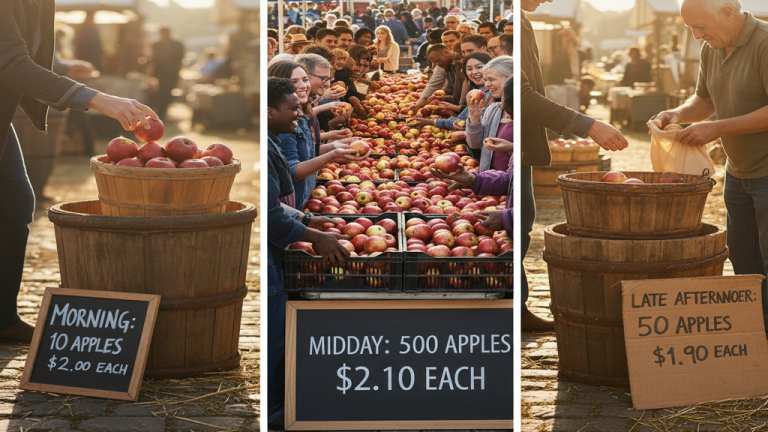Summary (TL;DR):
A tariff is a tax imposed on an imported good or service. Governments use tariffs to make foreign products more expensive, thereby encouraging consumers to buy domestic alternatives. While this can protect local industries from foreign competition and generate revenue for the government, it typically results in higher prices for consumers and risks sparking retaliatory taxes from other countries.
Introduction
Imagine an invisible gate at every nation’s border. For goods to pass through this gate, a toll must often be paid. This toll is a tariff. It is one of the oldest and most powerful tools in economic policymaking, capable of shielding fledgling industries, reshaping global supply chains, and igniting international disputes. Understanding tariffs is essential for any investor, as the decision to raise or lower this economic toll can send powerful ripples through entire sectors of the stock market, affecting everything from the price of a car to the cost of a can of soda.
A Look Back in Time
Long before the advent of the income tax, tariffs were the financial lifeblood of nations. In the early history of the United States, they were the single largest source of revenue for the federal government. The Tariff Act of 1789 was one of the very first pieces of legislation passed by the new U.S. Congress, designed to both fund the government and protect the nation’s budding industries from the might of the British Empire. For over a century, debates over tariff levels were a central issue in American politics, defining economic policy until the 16th Amendment introduced the federal income tax in 1913.
The Core Concept (Explained with Analogy)
Think of a town’s beloved local farmers’ market. The market manager (the government) wants to ensure the town’s farmers (domestic industries) can thrive.
A farmer from a neighboring county (a foreign country) wants to sell their apples at the market for $2 per bag, which is cheaper than the local farmers’ price of $3 per bag. To give the local farmers a fair chance, the market manager imposes a $1.50 “entry fee” (a tariff) on every bag of apples the out-of-town farmer brings in.
Now, the out-of-towner’s apples cost $3.50 ($2 + $1.50) at the market. Suddenly, the local farmers’ $3 apples look like the better deal. The local farmers are protected, and the market has collected a fee. However, the town’s shoppers now face higher apple prices overall and have fewer choices. This simple scenario captures the essence of a tariff: it is a form of protectionism that benefits domestic producers at the expense of foreign competitors and, often, domestic consumers.
A Real-World Connection
A clear, recent example is the 25% tariff on steel and 10% tariff on aluminum imposed by the United States in 2018. Citing national security concerns, the goal was to protect American steel and aluminum producers from foreign competition. While the move did benefit some domestic metal manufacturers, it also significantly raised costs for U.S. companies that are heavy users of these metals, such as automakers and beverage can producers. The move also sparked a series of retaliatory tariffs from other countries, leading to a wider “trade war” that impacted American exporters, particularly farmers.
From Theory to Practice
Governments use tariffs to achieve several goals: to protect “infant industries” until they can compete globally, to retaliate against unfair trade practices by other nations, or to safeguard industries deemed vital for national security.
For investors, news of tariffs is critical. It forces them to ask:
- Which companies will face higher costs? A company that relies heavily on imported raw materials (like a construction firm using foreign steel) may see its profits shrink.
- Which companies will benefit? A domestic company that competes with the taxed import (like a U.S. steel producer) may see its sales and stock price rise.
- What is the risk of retaliation? A U.S.-based company that exports a large portion of its goods (like a motorcycle manufacturer or a soybean farmer) is vulnerable if other countries impose their own tariffs in response.
A Brief Illustration
Tariffs generally come in two forms:
- Specific Tariff: A fixed fee per unit. For example, a tariff of $1,000 on every foreign car imported.
- Ad Valorem Tariff: A percentage of the item’s value. This is more common.
Let’s use an ad valorem example. A clothing retailer in the U.S. wants to import a designer jacket from Italy.
- Cost of the jacket from the Italian factory: $400
- U.S. ad valorem tariff on this type of jacket: 20%
- Tariff cost: 20% of $400 = $80
The total cost for the retailer to bring the jacket into the country is now $480 ($400 + $80), before factoring in shipping and other costs. This $80 tariff is collected by the U.S. government, and the higher overall cost is almost always passed on to the American consumer.
The Chapter’s Wisdom (Key Takeaways)
- A tariff is a tax on imports, paid by the importer to the government of the country that is importing the goods.
- The primary goal is to make foreign goods more expensive, thus making domestic goods more competitive.
- While tariffs protect specific domestic industries, they lead to higher prices for businesses and consumers.
- The imposition of tariffs often leads to retaliatory tariffs, which can harm export-focused industries and escalate into broader trade disputes. This connects directly to the dynamics we explored in the chapter on the U.S. Trade Deficit.
Food for Thought (Engagement Prompt)
- Who do you believe ultimately bears the cost of a tariff: the foreign company that produces the good, the domestic company that imports it, or the end consumer?
- Under what circumstances, if any, do you believe a country is justified in using tariffs to protect one of its own industries?
Additional Topics to Explore
- Best Trading Books: 3 Must-Reads for Mindset, Analysis, and Wisdom (Top Recommendation)
- Understanding the U.S. Trade Deficit: The Economic Ledger
- Candlestick Patterns an Introduction: The Market’s Poetry.






















